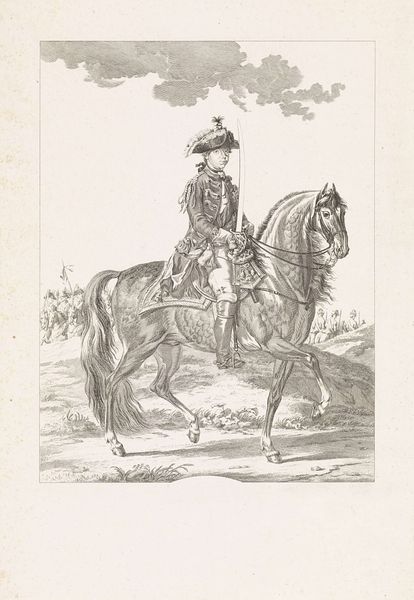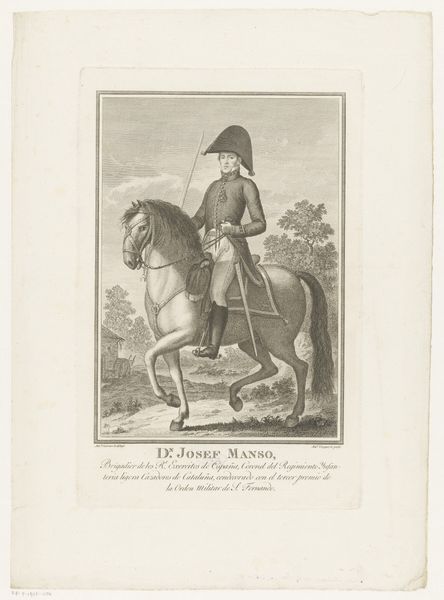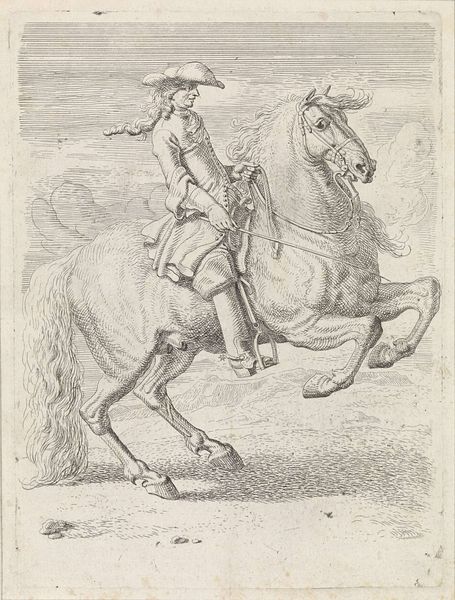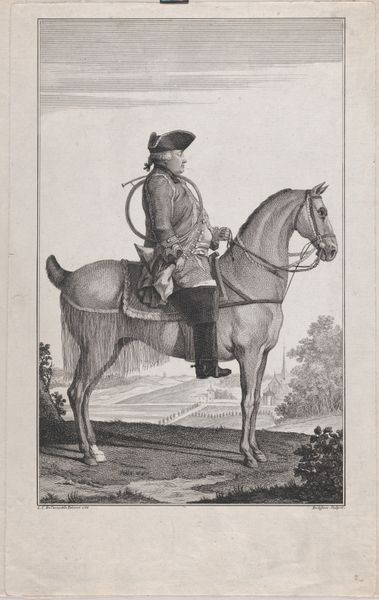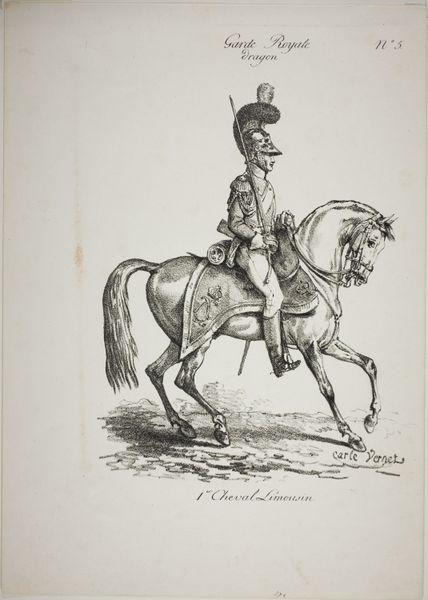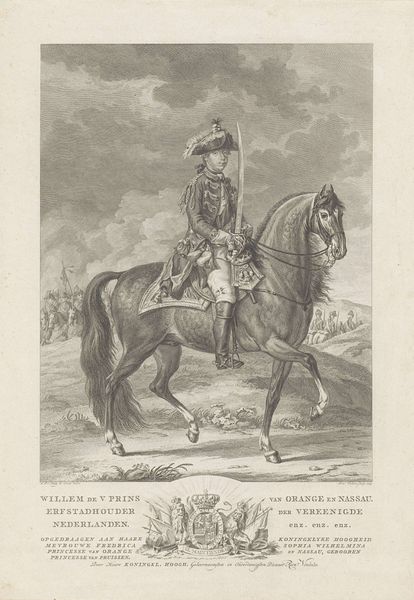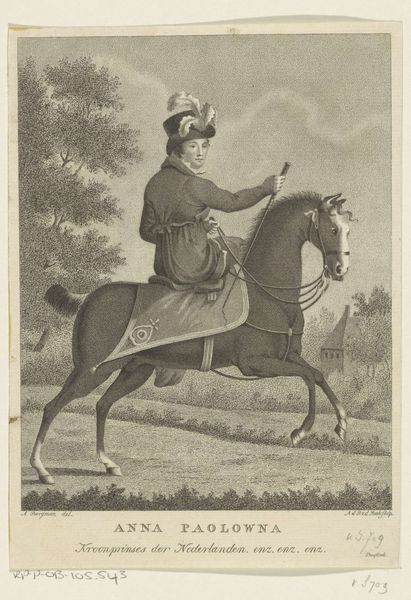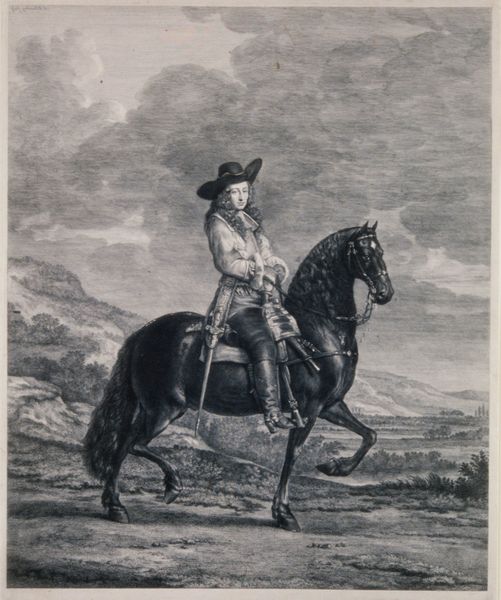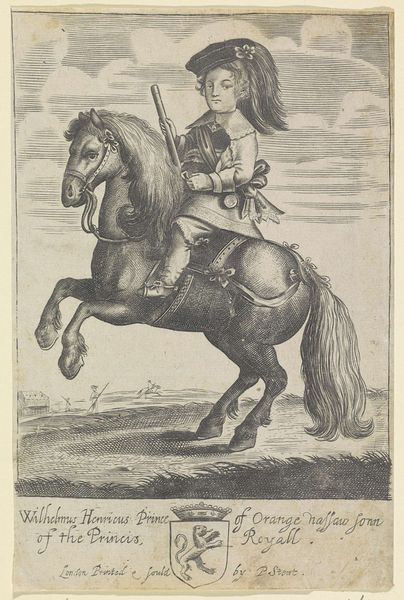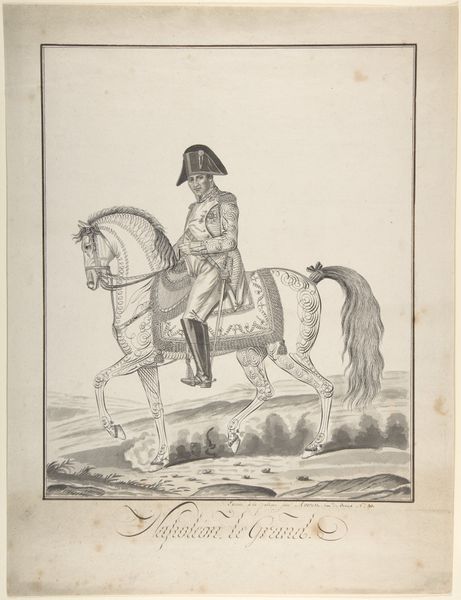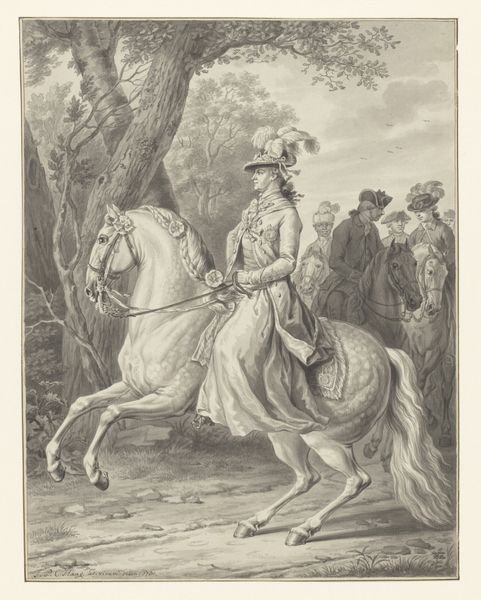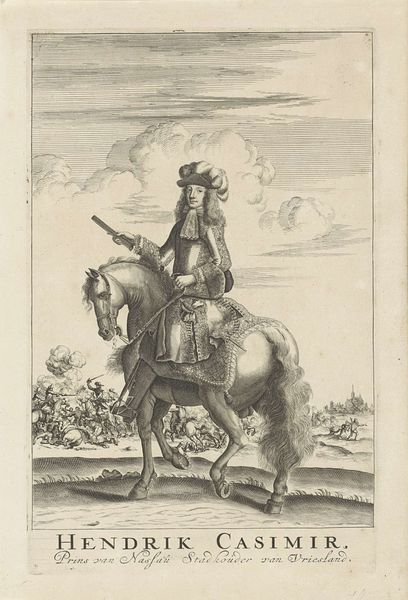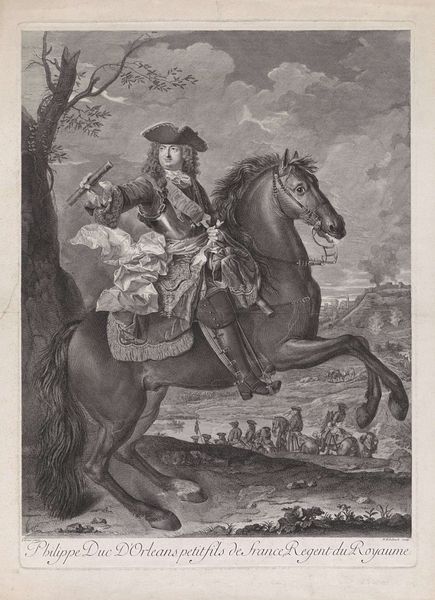
engraving
#
portrait
#
baroque
#
old engraving style
#
personal sketchbook
#
old-timey
#
15_18th-century
#
horse
#
genre-painting
#
history-painting
#
engraving
Dimensions: height 556 mm, width 373 mm
Copyright: Rijks Museum: Open Domain
Editor: This is Pieter Tanjé's "Portret van John Ligonier te paard," created in 1747. It's an engraving, and the detail is just incredible! It has such a regal, almost theatrical quality, with the rearing horse and the army in the background. How do you interpret this work? Curator: What strikes me is the artist's deliberate use of iconography to construct Ligonier's identity. The rearing horse, a classical symbol of power and control, speaks to Ligonier's military prowess. And notice the distant army; it shrinks warfare to a backdrop for individual glory. Do you see how this connects to broader themes of the Enlightenment era? Editor: Yes, absolutely! It's less about the actual battles and more about the individual hero. But isn't it also about establishing a lineage? The portrait seems to be reinforcing Ligonier's status and place in history. Curator: Precisely. Look at the coat of arms beneath the portrait; it’s practically shouting about heritage and belonging. Think about the intended audience for this engraving – what messages were they supposed to absorb by seeing these symbols so prominently displayed? Editor: They're meant to see him as legitimate, powerful, and connected to a grand tradition. It’s fascinating how much visual rhetoric is packed into this seemingly straightforward portrait. I never thought about how much symbols play a role to enforce the character being presented. Curator: Indeed. This engraving acts as a powerful time capsule, encapsulating not just Ligonier's image, but also the cultural values and aspirations of his era. Editor: I learned that symbols can reflect values and that cultural context influences the portrayal.
Comments
No comments
Be the first to comment and join the conversation on the ultimate creative platform.
